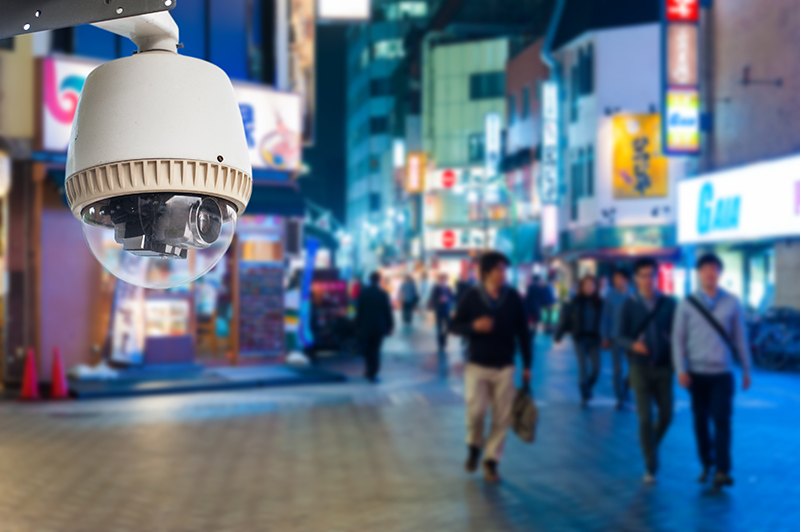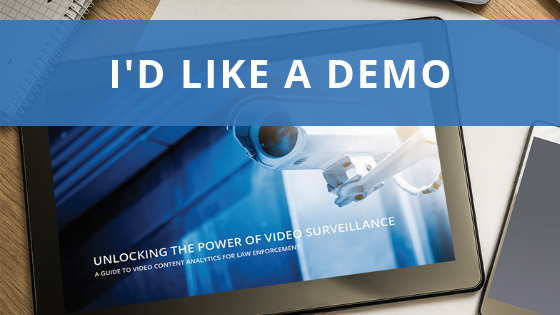Leveraging Street Surveillance and Enhancing Video Investigation

Saving Time and Curbing Crime with Video Investigation Software
Law enforcement agencies worldwide conduct street surveillance to actively monitor locations and activity. Sometimes the surveillance is conducted in person via uniformed officers or plain clothes detectives (sometimes undercover), but real-time, in-person street surveillance is time-consuming and—in certain situations—can be dangerous for police officers. As an alternative or complement to traditional street surveillance methods, agencies turn to video surveillance – an approach with its own disadvantages: First of all, it’s challenging for police to effectively monitor every real-time camera feed and, because of human error, critical details can be overlooked or even invisible to the human eye. It’s also it’s time-consuming for staff to review camera footage after an incident, when there is so much additional investigative work to accomplish. With volumes of video to review, operators face the challenge of prioritizing which video snippets to watch and how many resources to dedicate to reviewing video. Because of these limitations, much video evidence goes under-utilized.
Fortunately, video content analytics technology is now available: Video intelligence software is an AI-backed technology solution that integrates seamlessly with existing video surveillance cameras, video management software and other infrastructure. Whereas live monitoring of video cameras helps officers safely evaluate activity, video analytics technology empowers police to accelerate remote video footage review and extract video evidence, pinpoint objects in video based on powerful filtering combinations and search hours of video in a matter of minutes. This enables timely information and assessment; police can make better and faster decisions, and gather critical evidence when time is of the essence.
Here are three cases where street surveillance and video content analysis empowered local police to accelerate the investigation and solve their case:
- In 2018, when a local man approached and reportedly exposed himself a 10-year-old girl walking towards a school bus stop, the Hartford, Connecticut Police Department wanted to be able to track down the person-of-interest quickly. Using video content analytics software to filter video objects based on witness descriptions – such as the color of their close or the vehicle they were driving – the city police scanned two hours of video within three minutes to find the van that fit the suspect’s vehicle description. Once police found the van in the footage, they could zoom in on the operator’s license tag, identify the plates with license plate recognition (LPR) and broadcast an alert to the officers on patrol with information about the vehicle and the driver. The suspect was quickly stopped and detained. The video footage not only provided the evidence police needed to arrest the suspect for the crime, but it also showed that the van driver had driven in the area and approached children on other mornings in the same area where the incident occurred.
- In another Hartford Police Department investigation, officers were able to identify a drug dealer house because they could effectively apply search filters and directional heat maps to analyze foot traffic on a street where the suspected drug house was located. Using the sophisticated filtering capabilities of the analytics solution, police were able to quickly review and search hours of video to gather the evidence of all foot traffic paths to buildings. One house had extreme volumes of foot traffic to its door, making it obvious that the drugs were being sold there. In the past, detectives had to stake out suspected locations for days and nights in cars or on rooftops, which posed a risk to detectives and cost valuable time. Street surveillance enhanced with video analysis not only saved time and money but, most importantly, reduced crime in the neighborhood.
- A third example of using video intelligence technology to rapidly review street surveillance footage comes from the Chicago Police Department (CPD), which resolved an unusual and high-profile case of an alleged hate crime early in 2019 that involved Jussie Smollett, the actor from the hit TV series “Empire.” Smollett had claimed to be the victim of a homophobic and racist attack, but the crime turned out to be a hoax. To isolate video segments relevant to the Smollett case, police detectives used advanced video analytics tools to quickly search through video segments from hundreds of cameras, including a series of public and private cameras on the north side of the city. This allowed investigators to track the subject’s movement backwards to where they came from prior to the attack, which ultimately led to their identification. The video analytics and CPD interviews with suspects led to the arrest of Smollett for filing a false police report and disorderly conduct in Chicago.
Facial Recognition in Street Surveillance
In municipalities that allow it, facial recognition can also be used to help find persons of interest/suspects in a streetscape. Law enforcement agencies can use external image sources and digital images extracted from video to define watchlists of persons of interest. Based on these watchlists, real-time alerts can be configured to trigger calls-to-action in critical, time-sensitive situations. For example, if police are on the lookout for a gunman who just committed a crime, the police department (or another cooperating law enforcement agency) can create a suspect watchlist based on images extracted from video evidence from street surveillance and configure alerts to receive notifications of appearances of the suspect in other locations. This enables officers to quickly detect the suspect, assess the situation and make an informed decision about how to respond.
Video analytics for law enforcement is a game-changing information technology that empowers law enforcement professionals to go beyond ordinary street surveillance and transform everyday video content into actionable intelligence for driving public safety.
